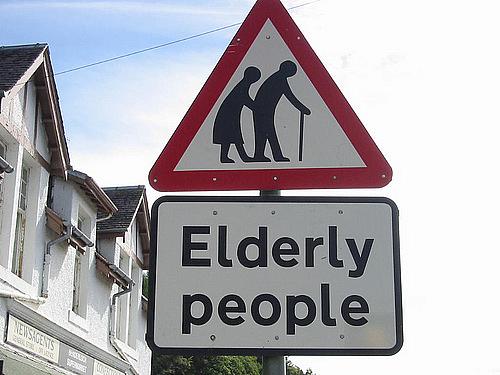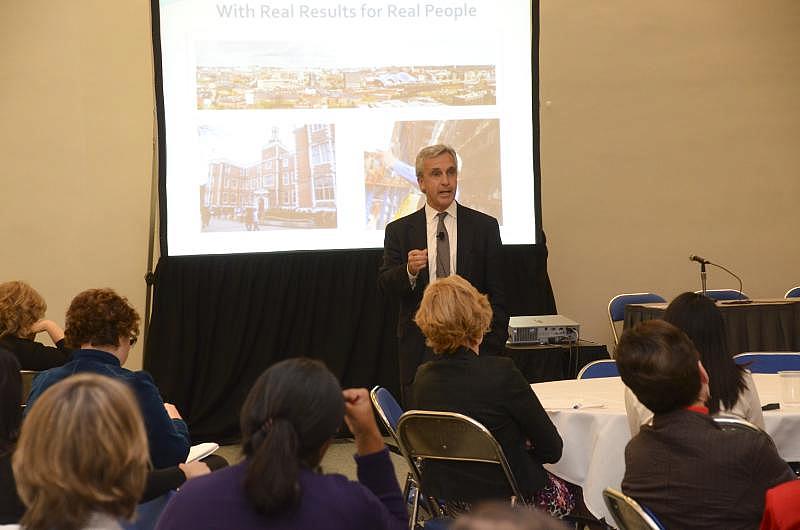The aging population: engine for economic growth…or fiscal nightmare?

Keeping older people healthy so they can be independent and productive well into their 70s – and even 80s – isn’t just a medical challenge, it’s also an economic challenge, said Michael W. Hodin, Ph.D., executive director of The Global Coalition on Aging at the Gerontological Society of America’s post-conference workshop on global aging.
And, due to the longevity revolution the world is experiencing, it’s a challenge that even developed nations aren’t addressing well.
Take age of retirement here in the U.S., for example. Back in the 1930s, when the still-reeling-from-the-Depression U.S. created Social Security for older people (at the same time that other developed nations were creating their cradle-to-grave social insurance programs), the government actuaries who decided when people could begin collecting their government pension assumed that by the time people reached 65, they’d be exhausted, decrepit and live two or three more years.
That assumption wasn’t all that valid then. And, as the young old (65-74), middle-old (75-84), and old-old (85 and up) are demonstrating, it’s even less so today. “It’s obvious,” Hodin said, “that 20thCentury ‘norms’ [for retirement] aren’t conforming to 21st Century realities.”
It’s not just retirement “norms” that aren’t addressing the reality that we are aging differently than Social Security’s actuaries thought we would. Health care “norms” aren’t keep up either.
For starters, said Hodin, in this longer-lived population, we need to increase vaccinations, not just pneumonia vaccination rates. We need to address hearing and vision loss – and develop cheaper drugs to manage the later. We need more dermatologists – there’s an explosion of skin cancer looming. We need better options for treating osteoporosis. We need a cure for Alzheimer’s. With regard to the later, Hodin said: “No one saw that coming, and it’s a game-changer in health care.”
In his data-and chart-filled presentation, Hodin zeroed in on the major factors that have come together – all around the world – to create either a health care fiscal nightmare or an engine for economic growth.
The first is the longevity bonus: life expectancy has skyrocketed. “By mid-century, seventy-five percent of those over the age of 60 will be living in developed nations,” said Hodin. And, he added, due to migration to cities and other nations, rural areas all over the world will be “hollowed out, populated mostly by the elderly.”
The second is that women – all over the world, not just in developed nations – are having fewer babies. So, while more hands-on care providers and services will be needed, fewer younger people will be available to fill those roles.
The third factor is “structural lag.” We don’t have the political, societal and economic policies and infrastructure in place to grasp the opportunities that come with population aging. “When policy lags,” said Hodin, “so does development of infrastructure and programs.”
To address that “lag” and turn this potential nightmare into an economic boom, Hodin suggests leaders, policy experts, and those who work with older adults need to (and need to be prodded to):
- Create opportunities for the marketplace to drive innovation and change.
- Find ways to improve health literacy.
- Create age-friendly cities and communities.
- Design “financial instruments” that provide and promote financial security for those benefiting from the longevity bonus.
- Align program development with government resources.
- Think about how the longevity bonus can and should alter the education-work-leisure life-course.
- Develop replicable and culturally appropriate – not one-size-fits-all – models for all the above.
That last item is key. “Every nation has similar issues,” said Hodin, “but they have vastly different infrastructures for solving the challenges and taking advantages of the opportunities.”
Image of Michael W. Hodin courtesy of The Gerontological Society of America
# # #
For more on the health challenges and opportunities that come with global aging:
Aging in the 21st Century: A celebration and a challenge
How to stop a slow-motion disaster: Learning to live with global aging
United States Lags in Alzheimer’s Support
Eileen Beal is a Cleveland, Ohio-based writer who has been covering the overlap between health care and aging for over a decade. This article was written with support of a MetLife Foundation Journalists in Aging Fellowship grant, which was administered through the Gerontological Society of America and New America Media.

